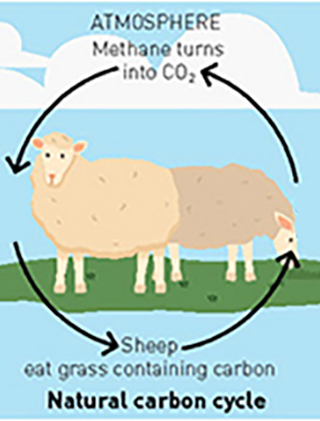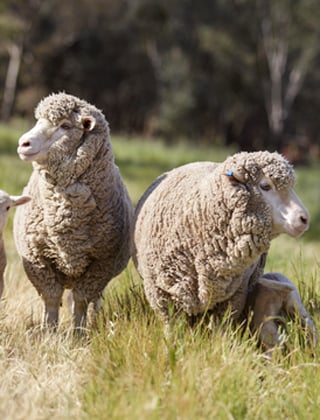Wool bioharvesting technique aims to provide woolgrowers with choice

A shortage of skilled shearers and increased costs of shearing are presenting a threat to the Australian wool industry. Wool harvesting is a key priority of AWI’s Strategic Plan 2022-2025. In addition to significant investment in training of shearers and wool handlers, AWI is also investing in innovative approaches to wool harvesting.
Many woolgrowers will have heard of Bioclip® which is a biological defleecing process developed by CSIRO and made available in the 1990s. The process involves giving sheep a single vaccination of Epidermal Growth Factor (EGF) that causes a break to occur in the wool fibres. A net is then placed over the sheep and fleece and the fleece is shed into the net about one week after the sheep is injected. This process removed the need for a mechanical handpiece. However, there was little adoption by woolgrowers mainly because the use of nets made it a labour-intensive process.
AWI-funded research conducted by the University of Adelaide is investigating a new opportunity for biological wool harvesting using a natural protein found in corn that generates a weakened zone at the base of the wool fibre but, importantly, enables the fleece to stay on the sheep without a net until the wool can be removed.
The process involves injecting sheep with a subcutaneous dose of the protein which targets a key biochemical event involved in fibre hardening in the wool follicle, generating a weakened zone of wool simultaneously in all fibres across the sheep. Despite the low tensile strength of less than 10 N/Ktex, the wool does not fall off in the paddock because of the much greater force that is required to remove larger parts of the fleece. The wool can be harvested 2 to 10 weeks after treatment, with a 2- to 4 -week period considered optimal. It is important that the wool stays on for long enough for the staple to grow to a few millimetres to protect sheep from sunburn. Later harvesting means that sheep are left with longer wool and are therefore less susceptible to hypothermia.
Work is now underway to develop a cost-effective and labour-saving method of harvesting the wool after treatment. This may include automation to peel off the fleece using a blunt handpiece which runs along the skin, guided by robotics which are able to identify sensitive areas of the sheep to avoid like the pizzle, and vacuum technology to move the fleece to the classing table. Health and safety issues around sharp handpieces would be eliminated and animal handling injuries could be minimised through the use of upright platforms or conveyor belts.
The bioharvesting technique aims to provide woolgrowers with choice when it comes to shearing. Some of the benefits include:
- Skilled labour are not required to harvest the wool
- Reduced labour intensity than traditional shearing
- Wool stays on the sheep without the use of a net, saving labour compared to Bioclip®
- Ability to control the time of shearing and length of the remaining wool after harvesting
- Sheep have short wool coverage after harvesting which protects their skin
- Improved wool quality and hence reduced risk of price discounts at sale due to a consistent fibre length, no shearing cuts and no second-cuts
- Hairs are not affected by the treatment therefore reducing contamination of the wool
- Bioharvesting could happen in the paddock using mobile systems, providing flexibility and reducing mustering
It is expected that commercial options will be available by 2028. The University of Adelaide research team are looking to identify a reliable and low-cost supplier of the protein compound. It is possible that it could be extracted from Australian legumes, enabling greater control over supply of the compound. The next steps for the science are for the product to be tested for safety and withholding periods, to optimise the dose and way and form that the product is injected, and to ensure it works across a range of seasons and genotypes. It is hoped that by the time these have been completed that the engineering team will have progressed towards a commercial system to remove the wool. The product must be approved by APVMA before it is commercially available.
Amy Lockwood, AWI Extension WA







